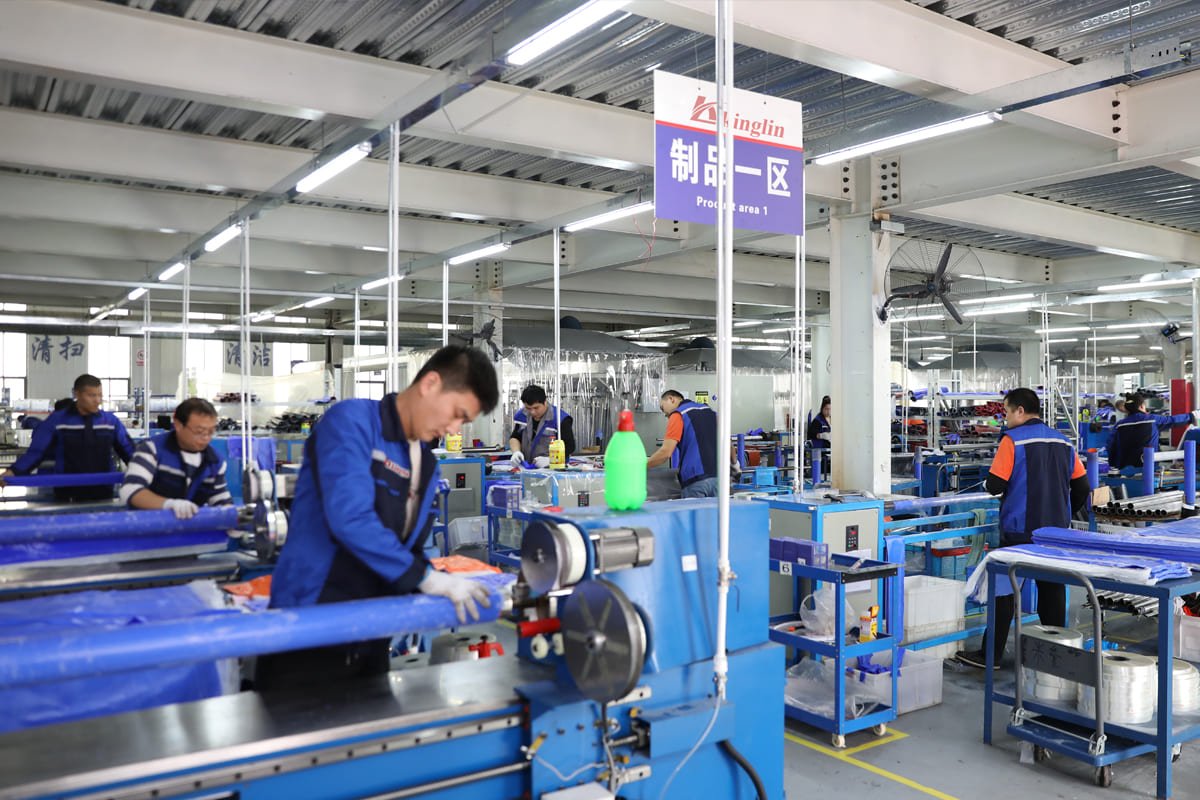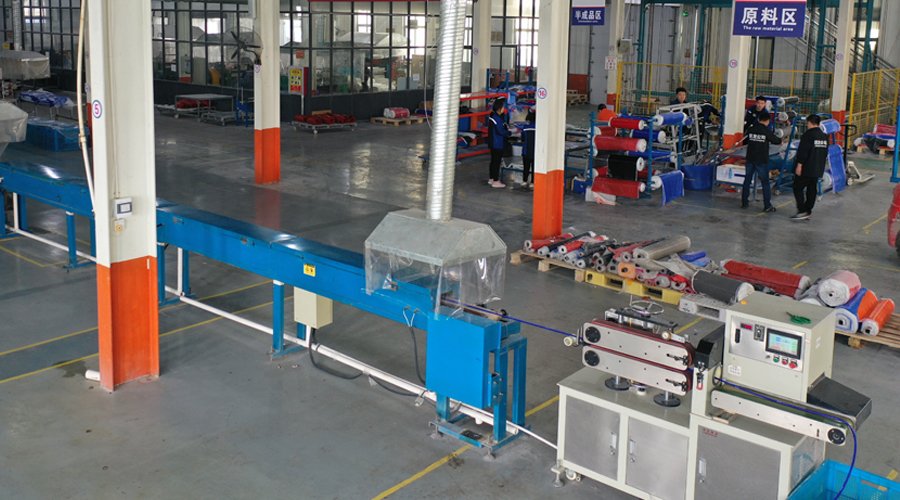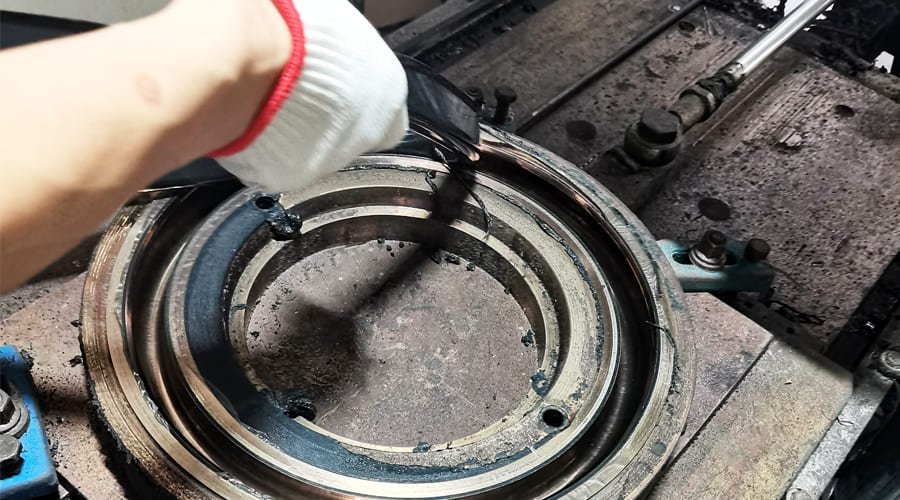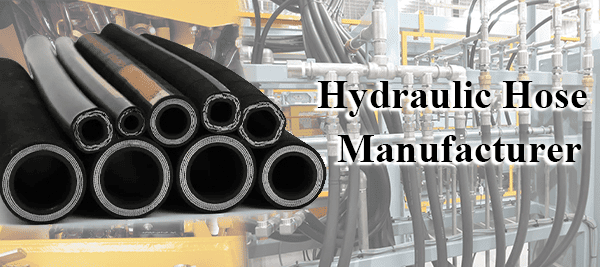คุณต้องรู้วิธีการ ท่อซิลิโคนมีการจัดทำขึ้นเพื่อให้แน่ใจว่าคุณได้รับผลิตภัณฑ์ที่ดี. บทความนี้อธิบายถึงวิธีการทำท่อซิลิโคน, เทคโนโลยีที่แตกต่างกัน, และแอปพลิเคชัน, และวิธีการบอกความแตกต่างระหว่างท่อซิลิโคนที่ดีและไม่ดี.
ท่อซิลิโคนทำในกระบวนการที่เกี่ยวข้องกับการผสมยางซิลิโคน, ปั้นมัน, จากนั้นเสริมด้วยชั้นผ้า. มันมีโครงสร้างพื้นฐานที่มีเลเยอร์ด้านในของซิลิโคน, การเสริมแรงผ้า, และชั้นนอกของซิลิโคน. การออกแบบนี้ให้ความยืดหยุ่นของท่อ, ความทน, และความต้านทานต่ออุณหภูมิสูง, ซึ่งทำให้เหมาะสำหรับการใช้งานในรถยนต์และอุตสาหกรรม.
มาดำน้ำลึกลงไปในการสร้างท่อซิลิโคนเพื่อทำความเข้าใจข้อดีของพวกเขาและใช้งานได้ดีขึ้น.
กระบวนการผลิตท่อซิลิโคนคืออะไร?

กระบวนการทำท่อซิลิโคนเกี่ยวข้องกับขั้นตอนสำคัญหลายประการเพื่อให้แน่ใจว่าพวกเขามีคุณภาพสูงและทำงานได้ดี:
- ผสม: ยางซิลิโคนผสมกับสารเติมแต่งที่จำเป็นเพื่อให้ได้คุณสมบัติที่ต้องการ.
- ขับไล่หรือแม่พิมพ์: ขับไล่ส่วนผสมซิลิโคนผ่านตายเพื่อสร้างท่อต่อเนื่องหรือปั้นมันเป็นรูปร่างเฉพาะ.
- เสริมกำลังด้วยผ้า: เพิ่มเลเยอร์ของผ้าที่มีความแข็งแรงสูงเช่นโพลีเอสเตอร์หรืออะรามิดเพื่อเพิ่มความทนทานและความต้านทานความดัน.
- รักษา: รักษาท่อ, มักจะมีความร้อน, เพื่อเสริมสร้างรูปร่างและคุณสมบัติของมัน.
- ตรวจสอบและทดสอบ: ตรวจสอบและทดสอบท่อที่เสร็จแล้วเพื่อให้แน่ใจว่าพวกเขาตรงตามข้อกำหนดด้านคุณภาพและประสิทธิภาพ.
กระบวนการผลิตท่อซิลิโคน
ท่อซิลิโคนที่ห่อด้วยมือ
- การก่อสร้าง: ประกอบด้วยเลเยอร์ด้านในของซิลิโคน, ชั้นกลางของผ้าเสริม (โดยทั่วไปโพลีเอสเตอร์หรืออะรามิด), และชั้นนอกของซิลิโคน.
- คุณสมบัติ: ให้ความยืดหยุ่นและการปรับแต่งที่ยอดเยี่ยม. ชั้นผ้าเพิ่มความแข็งแรงและความทนทาน, ทำให้เหมาะสำหรับการใช้งานแรงดันสูง.
- แอปพลิเคชัน: ใช้บ่อยในสภาพแวดล้อมยานยนต์และอุตสาหกรรมสำหรับการใช้งานเช่นสารหล่อเย็น, เทอร์โบชาร์จเจอร์, และท่ออินเตอร์คูลเลอร์.

ท่อซิลิโคนที่อัดแน่น
- การก่อสร้าง: ท่อซิลิโคนที่อัดขึ้นรูปจะทำโดยการบังคับซิลิโคนผ่านตายเพื่อสร้างท่อของเส้นผ่านศูนย์กลางและความยาวต่างๆ. พวกเขาสามารถรวมเลเยอร์เพิ่มเติมของลวดเสริมเพื่อเพิ่มความแข็งแรง.
- คุณสมบัติ: โดยทั่วไปแล้วจะใช้สำหรับแอปพลิเคชันที่ต้องใช้สายยางยาวอย่างต่อเนื่อง, เช่นท่อสูญญากาศและท่อฮีตเตอร์.
- แอปพลิเคชัน: เหมาะสำหรับใช้ในระบบทำความเย็นยานยนต์, สายสูญญากาศ, และแอปพลิเคชันแรงดันต่ำอื่น ๆ.

ท่อซิลิโคนแม่พิมพ์
- การก่อสร้าง: ทำโดยการวางซิลิโคนลงในแม่พิมพ์และปล่อยให้มันแข็ง, ช่วยให้มีรูปร่างที่ซับซ้อนและขนาดที่มีความอดทนแน่น.
- คุณสมบัติ: ปรับแต่งได้มาก, เหมาะสำหรับรูปร่างและการออกแบบที่ซับซ้อน. ใช้บ่อยสำหรับแอปพลิเคชันเฉพาะที่มีความแม่นยำ.
- แอปพลิเคชัน: ใช้ในแอพพลิเคชั่นยานยนต์และอุตสาหกรรมที่ต้องการรูปร่างที่กำหนดเอง, เช่นระบบการบริโภคอากาศและการเชื่อมต่อสารหล่อเย็น.

ส่วนประกอบของท่อซิลิโคน
เพื่อเลือกท่อซิลิโคนที่เหมาะสมสำหรับความต้องการของคุณ, คุณต้องเข้าใจว่าพวกเขาทำอย่างไร.
วัสดุซิลิโคน
- ยางซิลิโคน: อุณหภูมิต่อต้านสูงและต่ำ
- ฟลูออโรซิลิโคน ยาง: ทนต่อน้ำมันและเชื้อเพลิง
เสริมวัสดุเลเยอร์
ชั้นเสริมในท่อซิลิโคนช่วยให้มั่นใจได้ถึงความสมบูรณ์ของโครงสร้างและความต้านทานความดัน. วัสดุทั่วไปที่ใช้ ได้แก่:
ผ้าโพลีเอสเตอร์
- 1. ความต้านทานอุณหภูมิ: -40℃ถึง 180 ℃
- 2. ใช้กันทั่วไปสำหรับแอปพลิเคชันมาตรฐาน.
ผ้าอรามิด
- 1. ความต้านทานอุณหภูมิ: -40℃ถึง 250 ℃
- 2. ใช้ในสภาพแวดล้อมที่อุณหภูมิสูงสำหรับความต้านทานความร้อนที่เหนือกว่า.
ผ้าถักและทอ
- 1. ผ้าตาข่าย: คุ้มค่าและใช้กันทั่วไปเว้นแต่จะระบุไว้เป็นอย่างอื่น.
- 2. ผ้าทอธรรมดา: ให้ความต้านทานแรงดันที่ดีขึ้นและความแข็งแกร่งเมื่อเทียบกับผ้าตาข่าย.
โครงสร้างชั้น:
- ชั้นกาวภายใน: โดยทั่วไปความหนา 0.6 มม. ถึง 1 มม., สร้างความมั่นใจในความเข้ากันได้ของไหลและการปิดผนึก.
- ชั้นผ้า: หลายชั้น (โดยปกติ 3 ถึง 5) สำหรับการเสริมแรง, ด้วยความหนาแตกต่างกันไปจาก 4.5 มม. ถึง 6 มม..
- ชั้นกาวด้านนอก: โดยทั่วไปความหนา 0.8 มม. ถึง 1 มม., ให้การปกป้องสิ่งแวดล้อมและความทนทาน.
ส่วนประกอบเพิ่มเติม
การเสริมแรงลวด:
- ประเภท: บางท่อรวมถึงการเสริมแรงลวดเพื่อเพิ่มความแข็งแรงและเพื่อป้องกันการยุบภายใต้สุญญากาศ.
- วัสดุ: สายโพลีเอสเตอร์หรือสายอารามิด, ด้วยอารามิดเสนอประสิทธิภาพที่สูงขึ้น แต่ในราคาที่สูงขึ้น.
- สายการบินฟลูออโรซิลิโคน: สามารถเพิ่ม liner fluorosilicone สำหรับการใช้งานที่ต้องการความต้านทานต่อสารเคมีเพิ่มเติม.
สิ่งที่ประกอบขึ้นเป็นท่อซิลิโคน?
ยางซิลิโคน, ส่วนผสมหลักในท่อซิลิโคน, เป็นพอลิเมอร์ที่ทำจากซิลิกอน, คาร์บอน, ไฮโดรเจน, และออกซิเจน. การแต่งหน้านี้ให้ความเสถียรทางความร้อนที่ยอดเยี่ยม, ความยืดหยุ่น, และความต้านทานต่อปัจจัยด้านสิ่งแวดล้อม.
สรุป
สรุปแล้ว, ท่อซิลิโคนมีความสำคัญในหลายอุตสาหกรรมเพราะมันอยู่ได้นาน, มีความยืดหยุ่น, และสามารถจัดการอุณหภูมิสูงได้. รู้ว่าพวกเขาทำอย่างไร, เทคโนโลยี, และวิธีการบอกว่าคุณได้รับสิ่งที่ดีจะช่วยให้คุณเลือกได้ดีเมื่อคุณซื้อท่อซิลิโคนสำหรับสิ่งที่คุณทำ.



